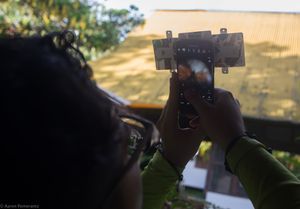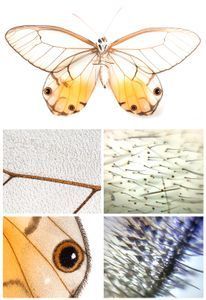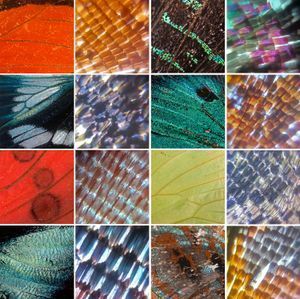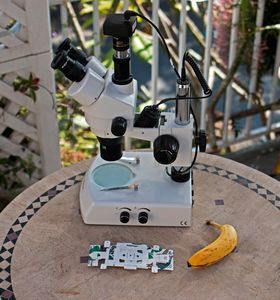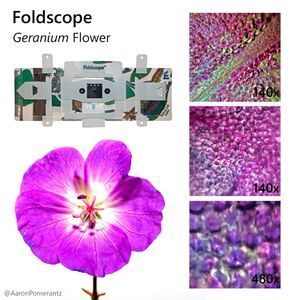Putting the Foldscope to the Test in the Amazon Rainforest
 Aug 30, 2015 • 7:50 PM UTC
Aug 30, 2015 • 7:50 PM UTC Unknown Location
Unknown Location 140x Magnification
140x Magnification Microorganisms
Microorganisms
Aaron Pomerantz
Learn about the author...
10posts
3comments
5locations

I made my first journey to the Peruvian Amazon about a year ago due to the discovery of a new kind of arachnid known as the ‘ decoy spider ‘. Since then, I’ve returned to a field site stationed at the Tambopata Research Center and have covered an array of new and interesting arthropods including glow worms and tentacled caterpillars . But we were missing a valuable tool at this research station: a microscope. Actually, we used to have microscope but the wear-and-tear of the jungle combined with humidity and invading fungi eventually degraded the scientific instrument beyond use. Since receiving the Foldscope , I’ve been able to investigate the micro-world in the Amazon with nothing but this incredible device and a cell phone. Here’s a short video recapping the experience in the field:
During my time in the Amazon rainforest, I was able to investigate tiny insects, mites, fungi, and plant cells from 140x to 480x magnification without requiring a large and expensive conventional microscope.
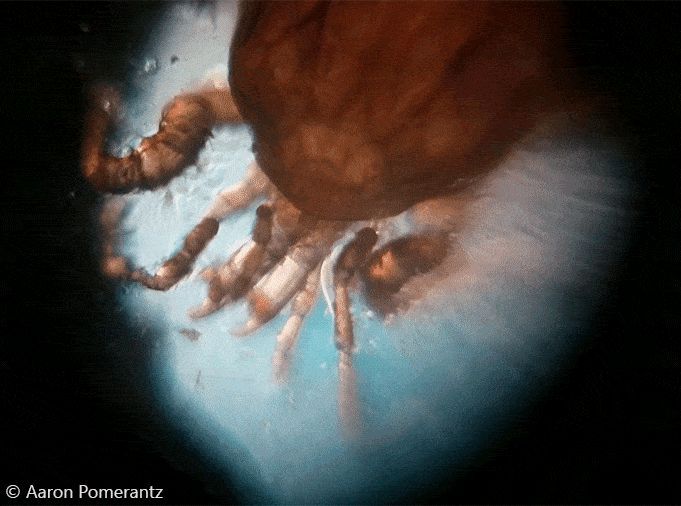
An unknown species of mite documented by connecting a cell phone to the Foldscope
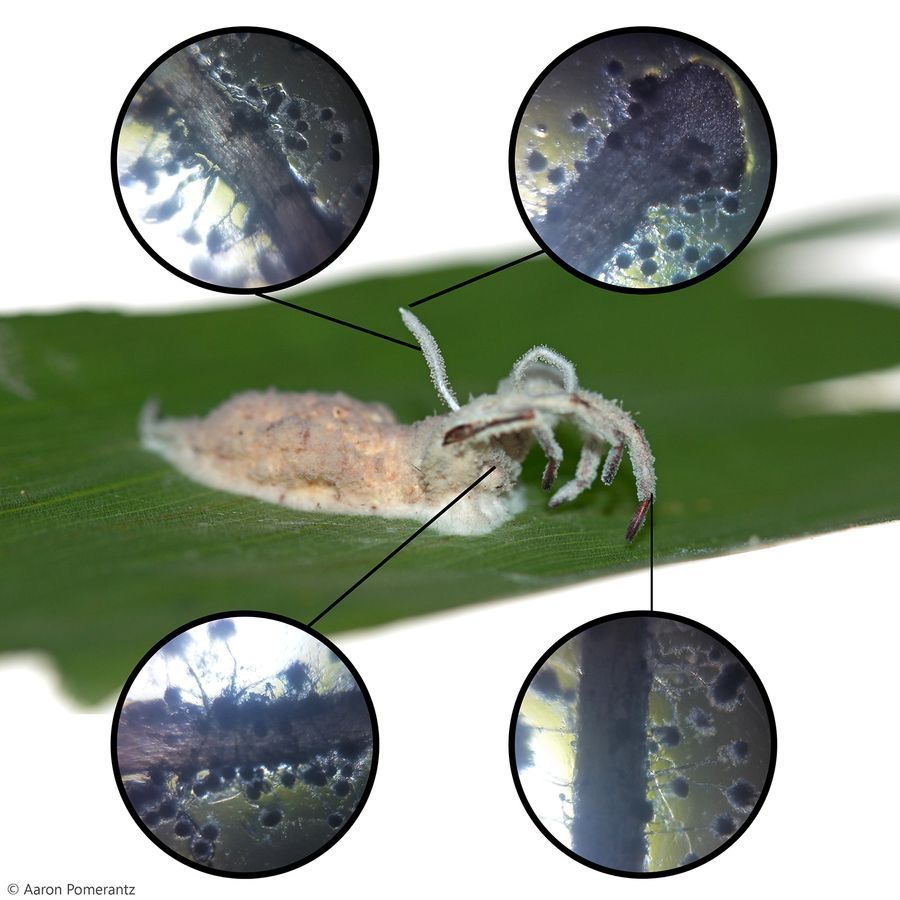
A spider infected by a parasitic fungus known as Cordyceps . The circles show regions of the fungus viewed under the Foldscope
In the video, I investigate bizarre structures on a plant, which are known as leaf galls . These are sometimes created by insects, but they usually have to be taken back to a lab and inspected in detail under a microscope. Lucky for me, I had the Foldscope in the field! It turns out these were in fact due to insect larvae, which burrowed into the leaf and tweaked the chemistry of the plant to produce galls. Even with macro photography, I couldn’t get much detail of the larva, but at 140x magnification under the Foldscope I was able to document the morphology of this unknown critter.
In the video, I investigate bizarre structures on a plant, which are known as leaf galls . These are sometimes created by insects, but they usually have to be taken back to a lab and inspected in detail under a microscope. Lucky for me, I had the Foldscope in the field! It turns out these were in fact due to insect larvae, which burrowed into the leaf and tweaked the chemistry of the plant to produce galls. Even with macro photography, I couldn’t get much detail of the larva, but at 140x magnification under the Foldscope I was able to document the morphology of this unknown critter.
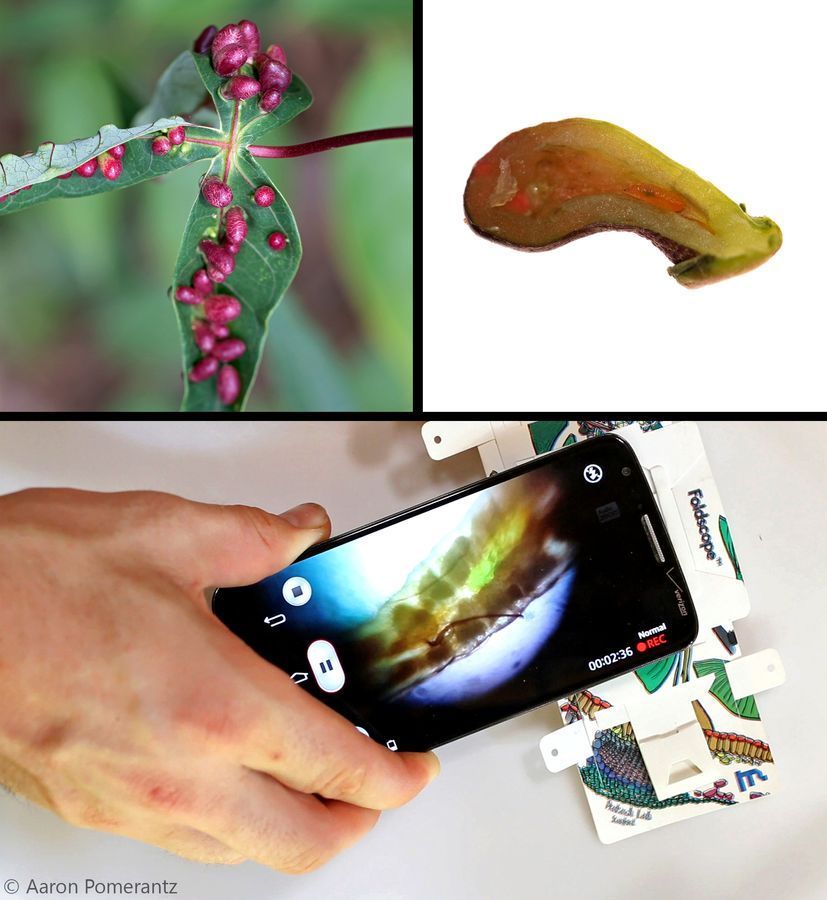
Top left, a leaf is covered in galls. Top right, a cross-section of a gall; notice the tiny insect larva living inside! Bottom, the larva was placed under the Foldscope and viewed on my cell phone. Pictures and videos were recorded in real-time out in the Amazon rainforest
Suspecting that the galls were formed by some sort of wasp or fly, I later got in touch with a couple of Diptera (fly) experts, Morgan Jackson ( @BioInFocus ) and Dr. Stephen Gaimari, who helped identify the gall forming culprits as a possible species of fly belonging to the family Cecidomyiidae .
The research team, led by Dr. Manu Prakash, seeks to “democratize science” by developing tools that are able to scale up to match problems in global health and science education – and I believe they are doing just that with the Foldscope. This device is cheap, easy to use, and broadly applicable whether you’re a curious young student, a medical professional in the field, or someone who is interested in the numerous tiny things that surround us. Until now, I’ve never had a device that made viewing and sharing the microcosmos so accessible.
Suspecting that the galls were formed by some sort of wasp or fly, I later got in touch with a couple of Diptera (fly) experts, Morgan Jackson ( @BioInFocus ) and Dr. Stephen Gaimari, who helped identify the gall forming culprits as a possible species of fly belonging to the family Cecidomyiidae .
The research team, led by Dr. Manu Prakash, seeks to “democratize science” by developing tools that are able to scale up to match problems in global health and science education – and I believe they are doing just that with the Foldscope. This device is cheap, easy to use, and broadly applicable whether you’re a curious young student, a medical professional in the field, or someone who is interested in the numerous tiny things that surround us. Until now, I’ve never had a device that made viewing and sharing the microcosmos so accessible.
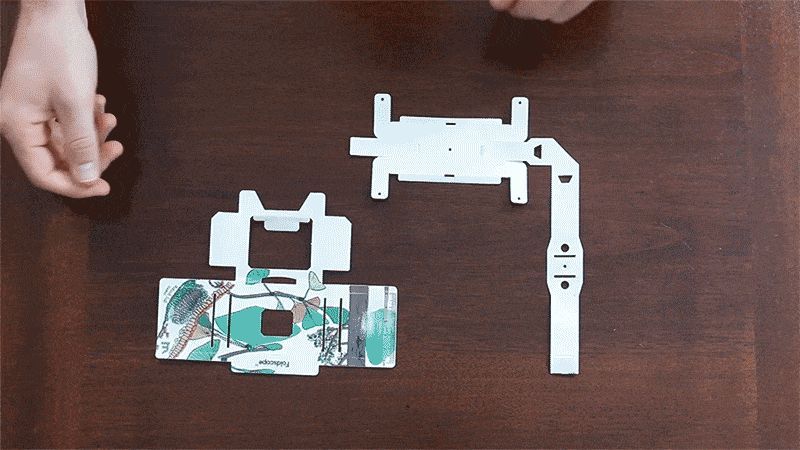
While the Amazon rainforest is one of the most biodiverse regions on the planet, it’s important to note that the diversity of the microcosmos is all around us. Below are some compilations I’ve put together while I tinkered with the Foldscope in Los Angeles before my trip:
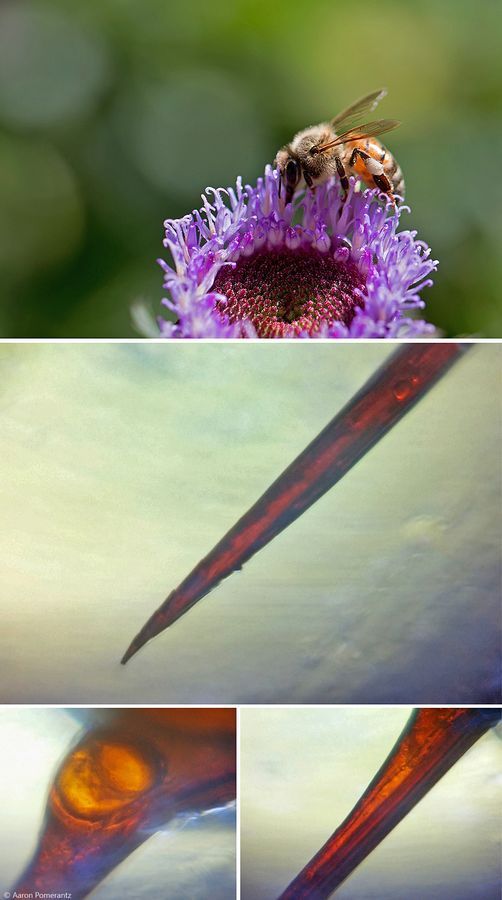
The stinger of a honey bee viewed under the Foldscope

Aphids feeding on milkweed
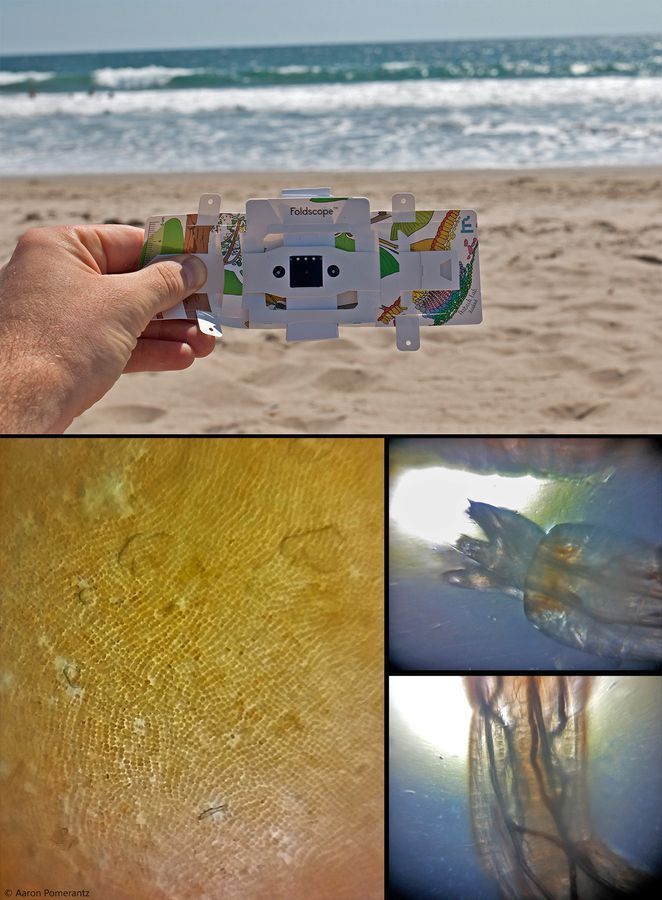
I took the Foldscope with me to the beach. Bottom left are kelp cells and bottom right is an unknown critter I dug out of the sand (some sort of worm?)
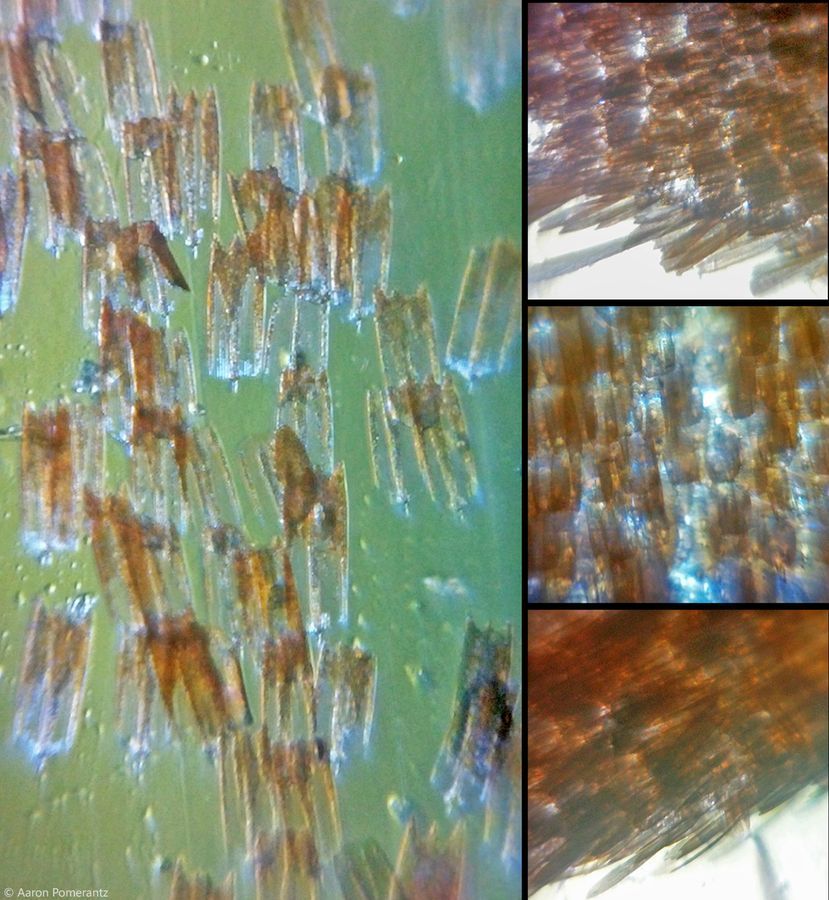
The wing scales of a skipper butterfly
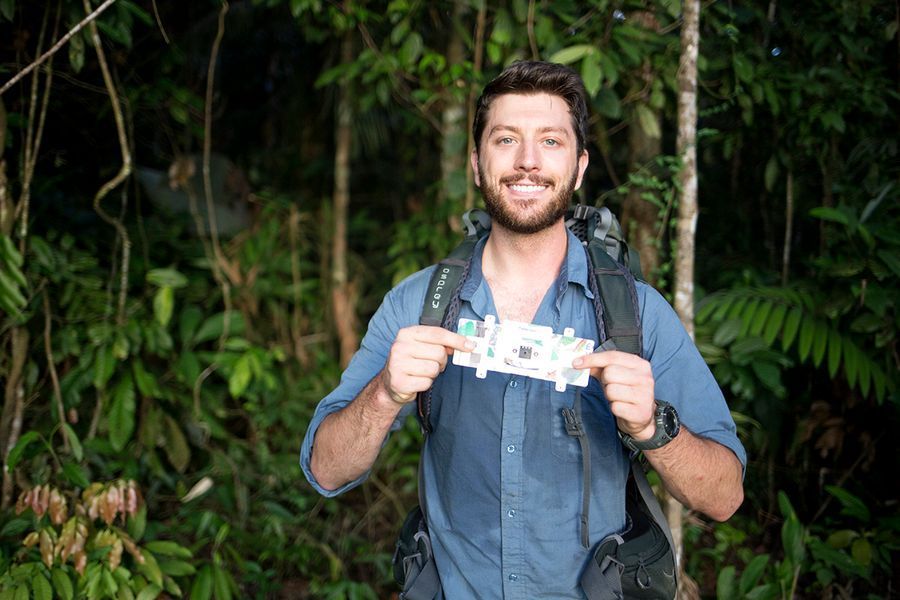
You can follow Aaron for more updates on Twitter @AaronPomerantz and the Stanford University Researchers @PrakashLab
Sign in to commentNobody has commented yet... Share your thoughts with the author and start the discussion!

 0 Applause
0 Applause 0 Comments
0 Comments